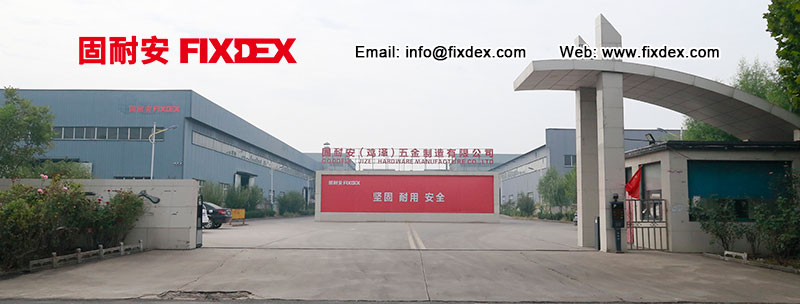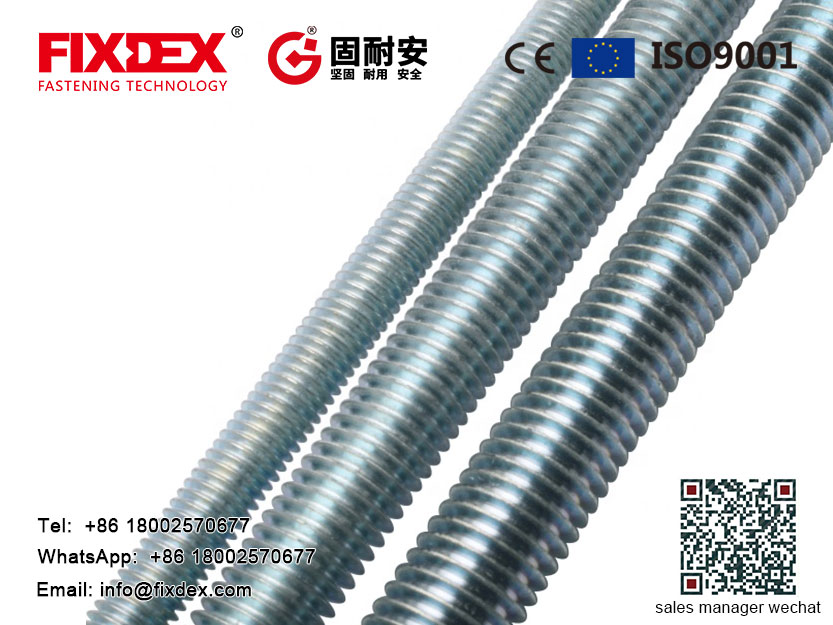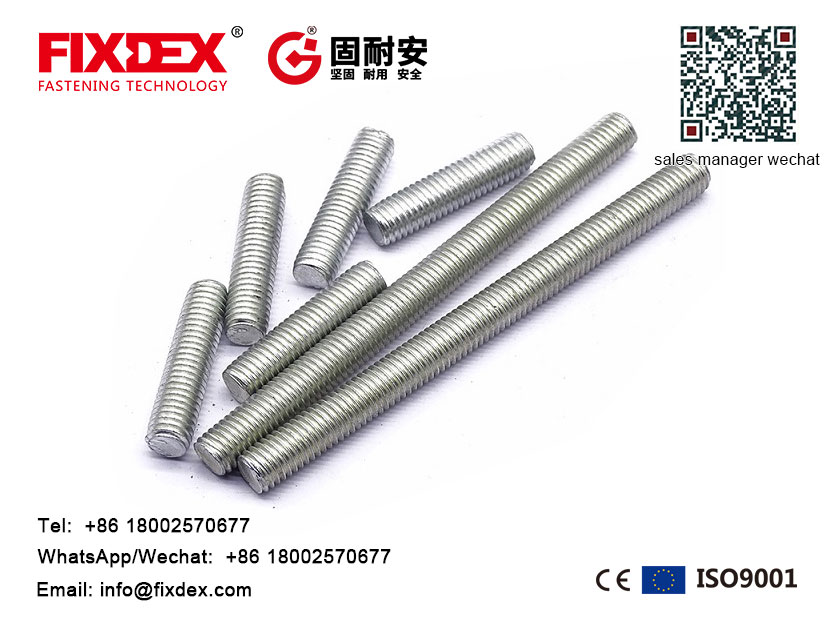fully class 12.9 threaded rod
fully class 12.9 threaded rod
Read More: Catalog threaded rods
The difference between half class 12.9 threaded rod and fully class 12.9 threaded rod
1. The structural difference between half grade 12.9 threaded rod and full grade 12.9 threaded
Threaded Rod DIN 975 Steel 12.9 have threads only on a portion of the bolt length, and the other portion is bare thread. Full-thread bolts have threads along the entire length of the bolt. The structural differences between these two types of bolts determine their application range and tightening performance when used.
2. Differences in the application scope of Half Threaded rod and full High Tensile Threaded Rod
Half-threaded rods are mostly used for fastening machines and equipment that bear lateral loads, such as connecting steel structures, connecting beams, connecting shafts, etc., and their advantage is that they are easy to disassemble and replace. Full-threaded rods are mostly used to connect equipment that bears longitudinal loads, such as connecting automobile engines and bases, connecting railway rails, etc., and their advantage is that they have greater fastening strength.
3. The difference between the installation methods of half-toothed rods and full-toothed rods
When installing a half-threaded rod, the bare threaded part should be fixed on the part, and then the bolt should be rotated to tighten the threaded part to drive the mechanical part to tighten. When installing a full-threaded rod, it is necessary to force the threads along the entire length of the bolt into the part to ensure the tightening force.
There are obvious differences between half-threaded rods and full-threaded rods in terms of structure, application range and installation method. When choosing the type of rod, it is necessary to choose the appropriate type according to the specific use requirements and installation environment to ensure the stable operation of the mechanical parts.

















